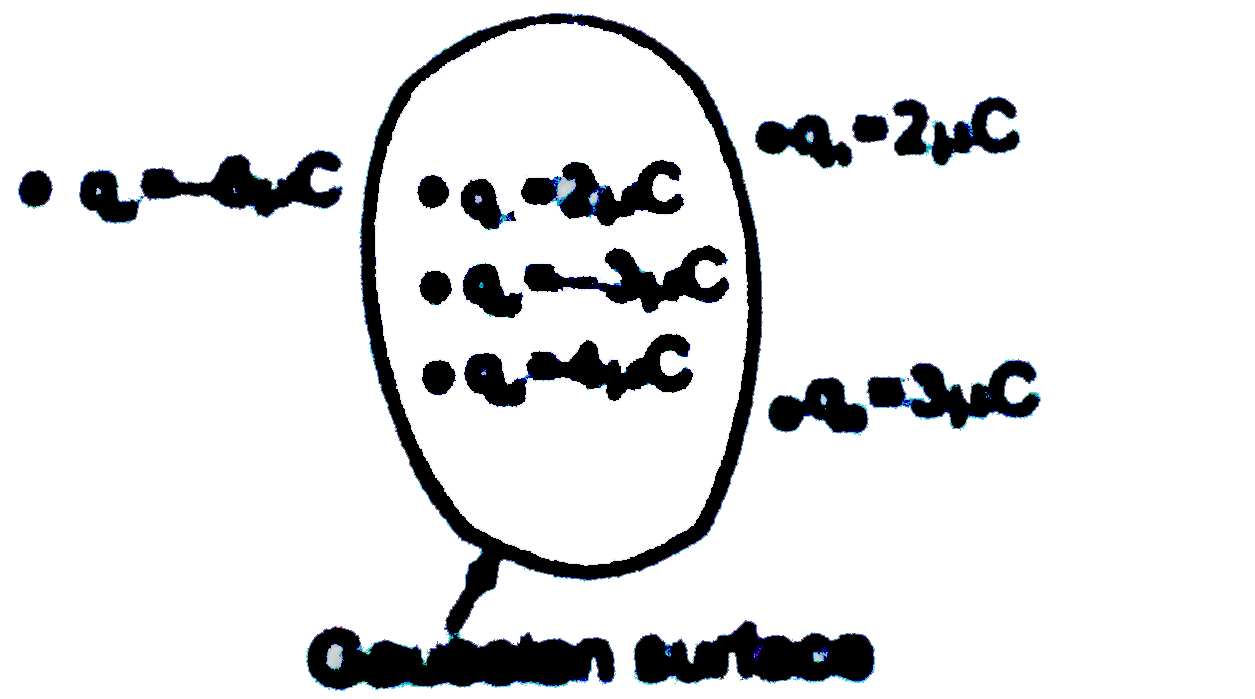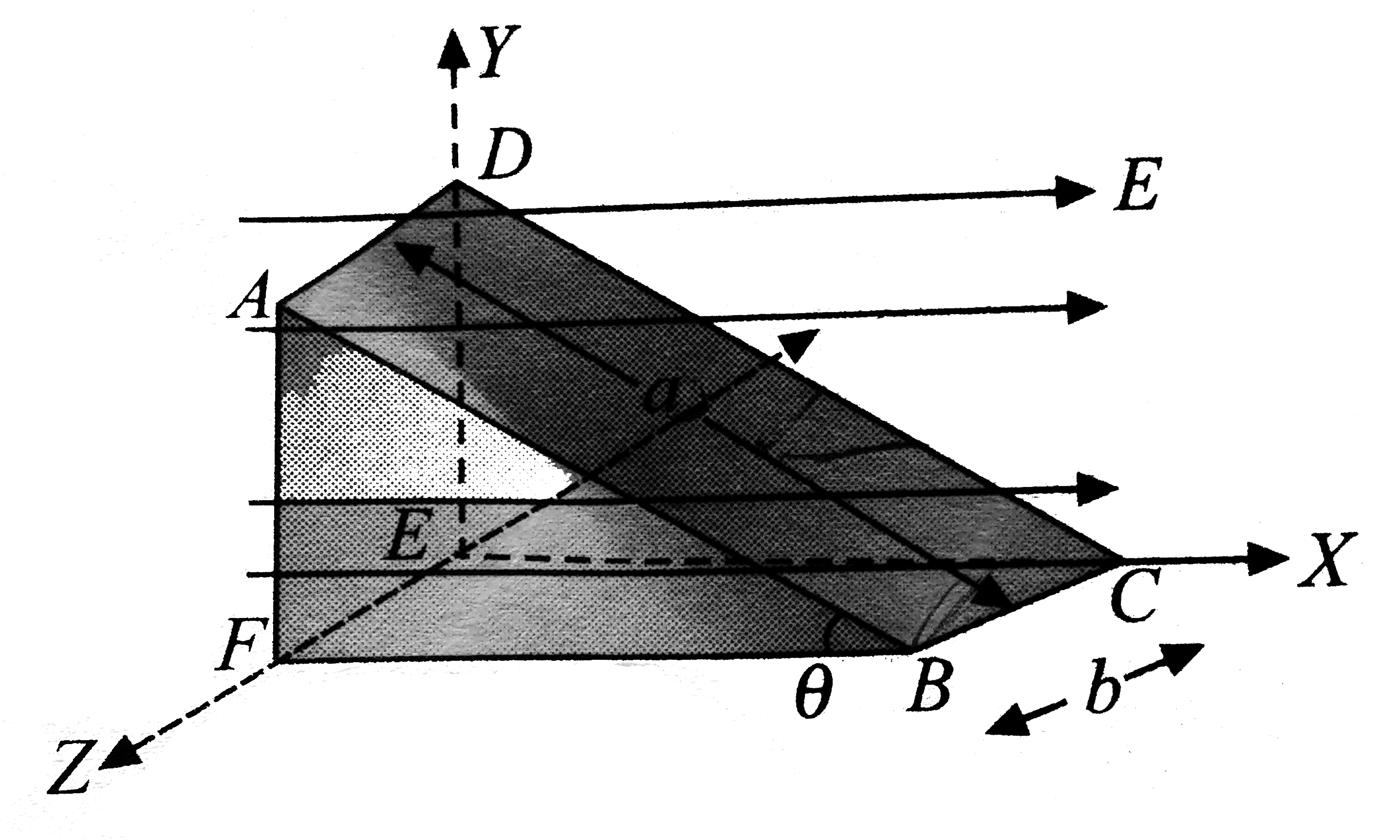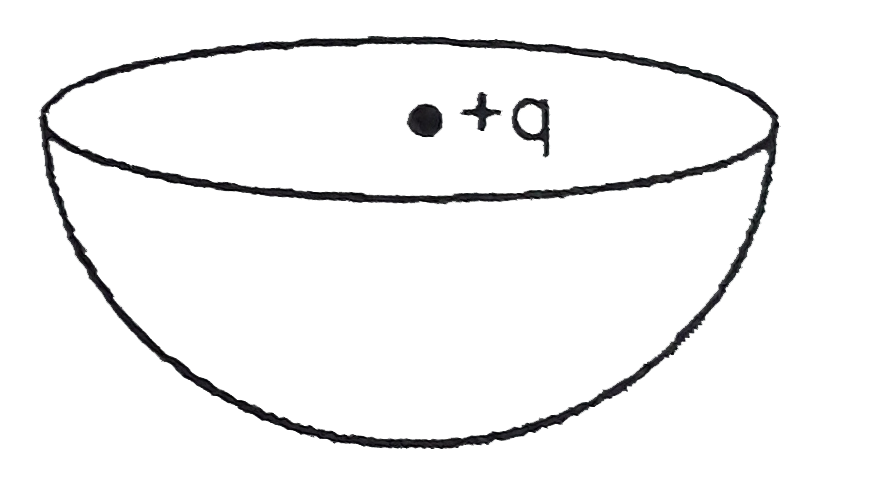Find out flux through the given Gaussian surface.

ϕ=Qinε0=2μC−3μC+4μCε0=3×10−6ε0Nm2/C
Topper's Solved these Questions
- ELECTROSTATICSBOOK - RESONANCE ENGLISHCHAPTER - ELECTROSTATICSEXERCISE - Problems
22 Videos
- ELECTROSTATICSBOOK - RESONANCE ENGLISHCHAPTER - ELECTROSTATICSEXERCISE - Exercise-1 Section (A)
9 Videos
- ELECTROMAGNETIC INDUCTIONBOOK - RESONANCE ENGLISHCHAPTER - ELECTROMAGNETIC INDUCTIONEXERCISE - A.l.P
19 Videos
- EXPERIMENTAL PHYSICSBOOK - RESONANCE ENGLISHCHAPTER - EXPERIMENTAL PHYSICSEXERCISE - PART -II
10 Videos
Similar Questions
Find out the flux through the curved surface of a hemisphere of radius R if it is placed in a uniform electric field E as shown in figure

View SolutionAn infinite, uniformly charged sheet with surface charge density σ cuts through a spherical Gaussian surface of radius R at a distance X from its center, as shown in the figure. The electric flux Φ through the Gaussian surface is .

View SolutionA point charge +q is placed at the centre of curvature of a hemisphere. Find flux through the hemispherical surface.

View SolutionS1: When a positively charged particle is released in an electric field , in its subsequent motion,it may or may not move along the electric field line passing through the point it has been released.
S2: In electrostatic, conductors are always equipotential surfaces.
S3: The flux through a closed Gaussian surface is non-zero. The electric field at some point on the Gaussian surface may be zero.
View SolutionA hollow half cylinder surface of radius R and length l is placed in a uniform electric field →E. Electric field is acting perpendicular on the plane ABCD. Find the flux through the curved surface of the hollow cylindrical surface

View SolutionFind flux through the hemispherical surface

View SolutionIf net flux through a Gaussian surface is zero, then find whether the following statements are correct or not.
The net charge inside the surface is zero.
View SolutionThe electric flux through a Gaussian surface that encloses three charges given by q1=−14nC,q2=78.85nC,q3=−56nC
View SolutionA point charge Q is kept at point 'A' the flux through the inclined surface of cone is 3Q5ε0. Now another charge −Q is also placed at point B. If net flux through the inclined surface nQ5ε0 is Find n.

View SolutionWhich of the following is true for electric-flux through a Gaussian surface ?
View Solution
